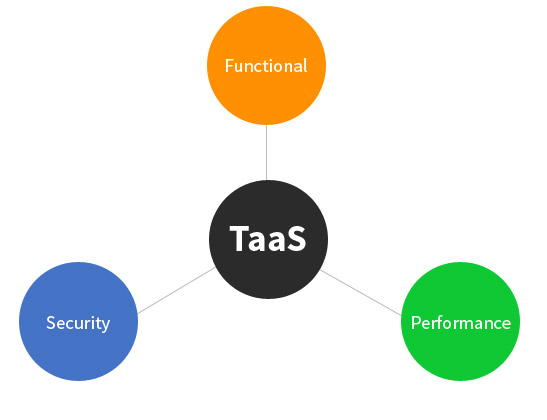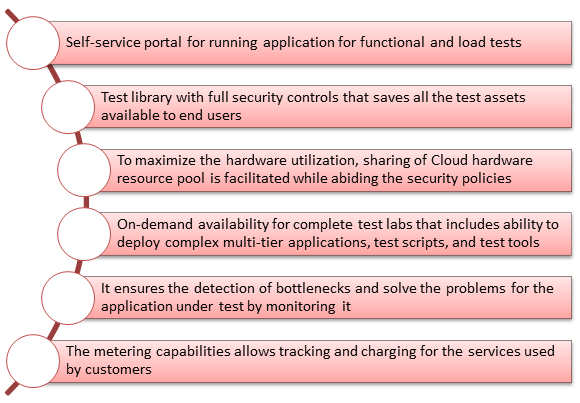Testing as a Service

It is important to assess and implement the right methodologies to achieve scale, minimize costs and offer improved services. Testing-as-a-Service (TaaS) is considered a viable testing model by many organizations to achieve reduced costs and improved service for their IT test requirements.
TaaS can be used for various QA activities, such as:
- Functional Testing
- Load / Stress Testing
- Performance and Benchmark Testing
- Regression Testing
Advantages of TaaS over traditional testing
- Scalable model via public cloud – utilize computing power, disk space, memory as per current requirements but have the ability to ramp up on demand very quickly
- Costs – Pay for what you use. No need to own your own infrastructure. No capital costs incurred.
- Licensing benefits – Operating system (OS), test tools, hardware, application licenses are managed by the cloud.
- Standardization – Centralized test environment with a standard set of tools and processes will ensure repeatability, efficiency and quality results
Types of TaaS
Functional Testing as a Service:
TaaS Functional Testing may include UI/GUI Testing, regression, integration and automated User Acceptance Testing (UAT) but not necessary to be part of functional testing.
Performance Testing as a Service:
Multiple users are accessing the application at the same time. TaaS mimic as a real-world users environment by creating virtual users and performing the load and stress test.
Security Testing as a Service:
TaaS scans the applications and websites for any vulnerability.
Key TaaS Features

Benefits of Cloud Testing
- Flexible Test Execution and Test Assets
- Some users claim 40-60% savings in the cloud testing vs. the traditional testing model
- Achieve a fast return of investments by eliminating the investment made after hardware procurement, management, and maintenance, software licensing, etc.
- Deliver product in quicker time through rapid procurement, project set-up, and execution
- Ensure data integrity and anytime anywhere accessibility
- Reduce operational costs, maintenance costs and investments
- Pay as you use
Traditional vs. TaaS services
| Approach | Traditional | TaaS |
|---|---|---|
| Test Environment | Manually Created | On-demand |
| Test Assets | Manually Generated | Dynamic |
| Test Data | Manually Generated | Dynamic Sanitized |
| Test Tools | Manually Purchased | On-demand |
| Test Documentation | Manually Generated | Dynamically generated |
| Business Domain Knowledge | Manually Extracted | Extracted Dynamically |
Different Levels of Maturity Model
The five levels of the TMM helps the organization to determine the maturity of its process and to identify the next improvement steps that are essential to achieving a higher level of test maturity.
| TMM Levels | Goals | An objective of TMM levels |
|---|---|---|
| Level 1: Initial | Software should run successfully |
|
| Level 2: Defined | Develop testing and debugging goals and policies |
|
| Level 3: Integrated | Integration of testing into the software lifecycle |
|
| Level 4: Management and Measurement | Establish a test measurement program |
|
| Level 5: Optimized | Test process optimization |
|
Difference between CMM & TMM
| CMM | TMM |
|---|---|
| CMM or Capability Maturity Model is for judging the maturity of the software | TMM or Test Maturity Model describes the process of testing and is related to monitoring |
| Processes of an organization | The quality of software testing model |


